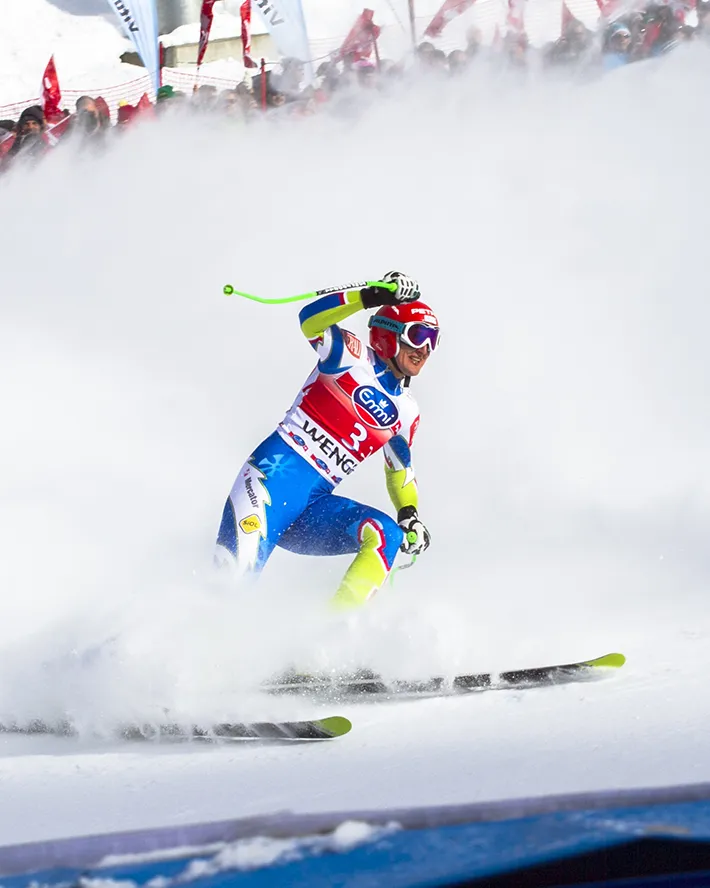Ski racing has a rich history dating back to the early 20th century, when the sport first began to gain popularity in Europe and North America. Over the years, many legendary ski racers have emerged, pushing the boundaries of what was thought to be possible and leaving a lasting impact on the sport. In this blog post, we will take a look at some of the pioneers who changed the game and helped shape the sport of ski racing into what it is today.
Don't be a sheep or lion in avalanche terrain
About 10 years ago a seminal paper was published that helped to explain a concerning observation made by avalanche accident investigators. They observed that many of the people involved in avalanche incidents had attended avalanche education. What was going on- why were these people still being injured or killed? The answer, as recognised by Ian McMahon in his paper "Evidence of heuristic traps in recreational avalanche accidents", was "human factors", i.e. human psychology. The particular advance in McMahon's paper was to recognise that heuristics- rough rules of thumb by which we make many of our daily, routine decisions- were at play. Contrary to what you might think (especially if you're male), we often don't make methodical and rational decisions for most of what we do, instead we use mental short-cuts termed heuristics. For example, every day I drive to work by the same route, although I know there are two or three that are equally quick. Why? Familiarity, a heuristic. In most cases heuristics make life easier- it's too tiring to actively decide every day which way I'm going to drive to work, along with all of the hundreds of other minor decisions that I have to make, so mostly I (and I'm sure you too) rely on these almost subconscious heuristics. However, there's a down-side to this, as pointed out by McMahon. Heuristics don't serve us well in avalanche terrain. In fact, they can lead us to behaviour that's downright dangerous. McMahon pointed out four main types of heuristic at play in avalanche accidents:
1. Familiarity. In other words, I've skied this slope before so it'll be all right this time. For an event like an avalanche slide, where many independent semi-random factors must align for it to occur (e.g. weather, snowpack, group size etc.), it's perfectly feasible for a slope to be safe one day, or even for most of the season, but dangerous at other times. As an aside, the best example of this heuristic was one I heard a while ago on my PhD safety induction course at University. The tutor talked about the construction workers who worked on the high girders of sky scrapers. When asked why they didn't routinely use safety harnesses, the most common reply was "I've never fallen off before".
2. Social proof. Other people are doing it, so it must be ok. Social proof has a very powerful effect on our decision making, a fact long recognised by advertisers (a famous person wears this, so I will too) and website designers- look at how many websites have positive customer testimonials displayed (I know, I need to put ours on, all great in case you're wondering). In avalanche terrain, this is risky. In a reasonable sized group you can feel safety in numbers- the reality is that you're no more safe, and probably less safe, in a larger group. You can also feel reasured by seeing tracks on the slope that you're thinking about skiing. But when were they made, how has the wind and temperature affected the snow since, did those people know what they were doing or just get lucky? Do you want to bet your life on the decision of a stranger you've never met? Feeding into this is peer pressure and what's been termed "sheep syndrome", where a leader (who in recreational groups is often nominated based on factors other than avalanche knowledge) is unquestioningly followed.
3. Commitment. I've made a plan so I'm sticking to it. We tend to use this heuristic frequently, as it's a lot easier than continually sorting and evaluation new data to remake plans. However, that's exactly what's needed in avalanche terrain, where the situation may not be what was expected in the planing phase or may change rapidly because of weather or other factors. Instead of ridid commitment, flexibility is required.
4. Scarcity. Scarcity of resources has profound effects on humans. The resource in question becomes over-valued and people will compete for it to an irrational degree (I'm reminded of the stampede that occured on the opening of the Ikea store in London a few years ago- click here for link). In snow sports, this translates to "powder fever", or what's been called "lion syndrome". The danger of this is that the competition clouds rational judgement on whether what you're doing is safe.
So how do we address these issues? Firstly, it's important to be aware of them and recognise when they play a part in your own backcountry travel decisions. However, these psychological traits are so ingrained that that isn't enough. Instead the best defence is in using systematic decision making tools on every slope that you want to ski, and I'll talk about some of these in a subsequent blog. In the meantime, think about the heuristics you use, stay safe and have fun.



excellent blog articles.enjoyed reading them.
Thanks Gary!